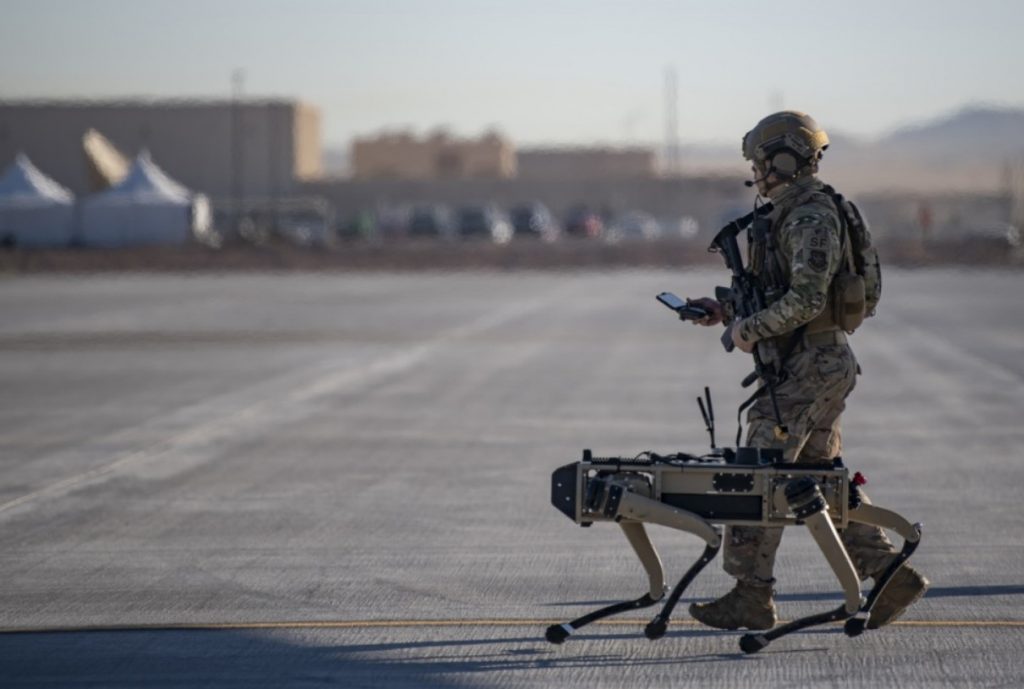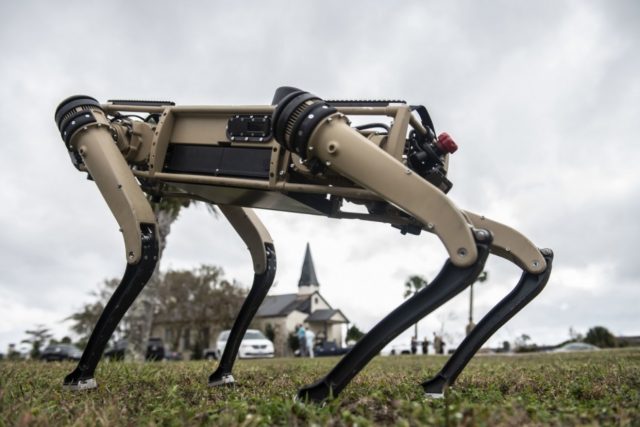The US Air Force’s Tyndall Air Base will be one of the first to deploy robot dogs on patrol tasks, following a year of development and testing.
Tyndall Air Force Base and the 325th Security Forces Squadron have worked with Ghost Robotics – the company that builds the robots – to develop the semi-autonomous system to enhance security and safety for the base population.
These computerized canines demonstrated their abilities on November 10 at an event attended by Maj. Gen. Tom Wilcox, Air Force Installation and Mission Support Center commander, and leadership from the 325th Fighter Wing and the Tyndall Program Management Office.
“We are very excited,” said Maj. Jordan Criss, 325th Security Forces Squadron commander. “We are the first unit within the Department of Defense to use this technology for enhanced security patrolling operations.”
One of the more prominent appearances of the Ghost Robotics Vision 60 prototype system was at the air force’s Advanced Battle Management System (ABMS) on-ramp, which tested the “internet of things” of the military. The test took place between late August and early September.

While these robots walk on all fours and resemble a dog, they are not intended to replace the military working dogs. Instead they will aid in patrolling operations and, in doing so, allow Tyndall’s defenders to focus their efforts on security actions that require a physical presence.
“These robot dogs will be used as a force multiplier for enhanced situational awareness by patrolling areas that aren’t desirable for human beings and vehicles.” Criss said.
Criss explained that the robot dogs will be given a patrol path which will be set and monitored by the Security Forces Electronic Security Sensor System noncommissioned officer in charge.
“We will be able to drive them via a virtual reality headset within our Base Defense Operations Center,” said Criss. “We will be able to see exactly what the robot dog is detecting through its mobile camera and sensor platform if desired, we will also be able to issue verbal commands to a person or people through a radio attached to the dogs.”
The semi-autonomous canines allow defenders that would otherwise be patrolling these areas to focus on training, security and overall situational awareness across the base.
This technology has the potential to replace and exceed the capabilities of certain static defense equipment especially in a contingency, disaster, or deployed environment. This makes Tyndall, post Hurricane Michael, the perfect home for the Air Force’s newest computerized canines.



























